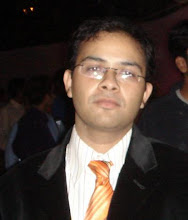Recently I had the opportunity to witness a performance of that oft-mentioned Hyderabadi play; Taramati: the legend of an Artist. After reading about it far too many times in the papers, I thought what the hell, may as well check it out.
The play relates a rather romanticized (ie, questionable) version of the tale of Taramati and her affairs with the penultimate Qutub Shahi king, Abdullah. The play itself was OK... I didn't really care for the performances, good though they were. The language was high falutin Urdu, even for me. Which bothered me: Why use north Indian style Urdu in a play about the birth of Hyderabadi tehzeeb? Hyderabadi Urdu, or Dakkani, is as ancient as the northern variant, and a literary language for longer. So it would seem logical to employ Dakkani here, would it not? Intelligibility for a wider audience certainly wasn't a consideration, that's for sure.
P.S: My posts will probably be bite sized for a while now... I blame my short attention span on Web 2.0.

The play relates a rather romanticized (ie, questionable) version of the tale of Taramati and her affairs with the penultimate Qutub Shahi king, Abdullah. The play itself was OK... I didn't really care for the performances, good though they were. The language was high falutin Urdu, even for me. Which bothered me: Why use north Indian style Urdu in a play about the birth of Hyderabadi tehzeeb? Hyderabadi Urdu, or Dakkani, is as ancient as the northern variant, and a literary language for longer. So it would seem logical to employ Dakkani here, would it not? Intelligibility for a wider audience certainly wasn't a consideration, that's for sure.
P.S: My posts will probably be bite sized for a while now... I blame my short attention span on Web 2.0.


No comments:
Post a Comment